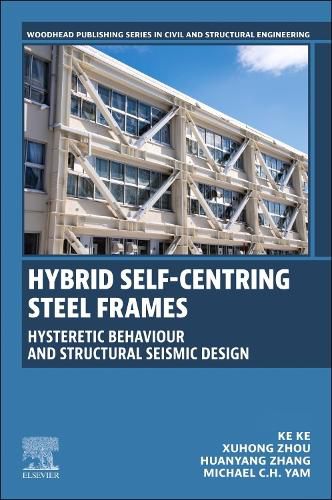Readings Newsletter
Become a Readings Member to make your shopping experience even easier.
Sign in or sign up for free!
You’re not far away from qualifying for FREE standard shipping within Australia
You’ve qualified for FREE standard shipping within Australia
The cart is loading…






Hybrid Self-Centring Steel Frames: Hysteretic Behaviour and Structural Seismic Design provides readers with up-to-date information on hybrid steel frames equipped with self-centring energy dissipation bays (HSF-SCEDBs), an innovative seismic-resilient structural system. The book provides details on the conception and development of HSF-SCEDBs. It comprehensively discusses a series of experimental programmes investigating the hysteretic behaviour of novel materials and structural components that endow HSF-SCEDBs with self-centring and energy dissipation capabilities. Furthermore, the book reports detailed discussions on the dynamic behaviour of HSF-SCEDBs based on the results of numerical simulations. The book also reveals the seismic demand of HSF-SCEDBs from a spectral perspective using equivalent single-degree-of-freedom (SDOF) systems. Building upon these insights, it develops seismic design and evaluation frameworks to bridge the gap between academic research and practical implementation, positioning the book as a valuable resource for practitioners and academics in structural and seismic engineering. By integrating advanced technologies and methodologies aligned with current seismic design trends, the book aspires to advance the frontiers of knowledge in structural and seismic engineering.
$9.00 standard shipping within Australia
FREE standard shipping within Australia for orders over $100.00
Express & International shipping calculated at checkout
Stock availability can be subject to change without notice. We recommend calling the shop or contacting our online team to check availability of low stock items. Please see our Shopping Online page for more details.
Hybrid Self-Centring Steel Frames: Hysteretic Behaviour and Structural Seismic Design provides readers with up-to-date information on hybrid steel frames equipped with self-centring energy dissipation bays (HSF-SCEDBs), an innovative seismic-resilient structural system. The book provides details on the conception and development of HSF-SCEDBs. It comprehensively discusses a series of experimental programmes investigating the hysteretic behaviour of novel materials and structural components that endow HSF-SCEDBs with self-centring and energy dissipation capabilities. Furthermore, the book reports detailed discussions on the dynamic behaviour of HSF-SCEDBs based on the results of numerical simulations. The book also reveals the seismic demand of HSF-SCEDBs from a spectral perspective using equivalent single-degree-of-freedom (SDOF) systems. Building upon these insights, it develops seismic design and evaluation frameworks to bridge the gap between academic research and practical implementation, positioning the book as a valuable resource for practitioners and academics in structural and seismic engineering. By integrating advanced technologies and methodologies aligned with current seismic design trends, the book aspires to advance the frontiers of knowledge in structural and seismic engineering.